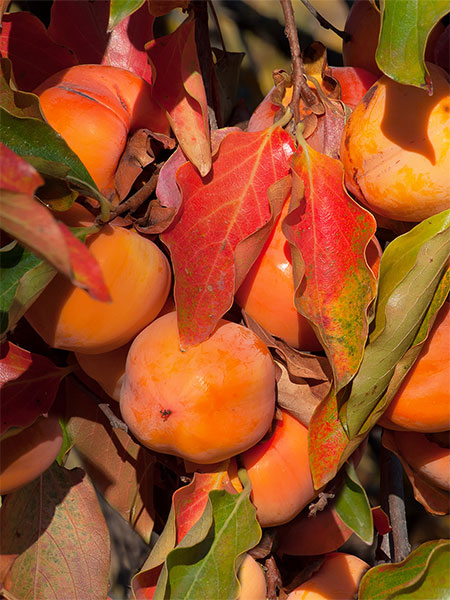 Botanical name: Diospyros kaki
Botanical name: Diospyros kaki
Crown and root system: This is a deciduous tree with a rounded crown of medium proportion, and a non-invasive root system. During the fall the leaves turn various shades of fiery red and gold.
Growing regions: All over the country, except for areas that are particularly hot. The nursery has varieties that do not need numerous doses of cold weather in order to yield fruit.
Ripening date: Summer months depending on the variety.
Planting in a container: May be grown in a container, on a balcony or rooftop.
Recommended planting season: All year round.
Special care: As with most summer fruit trees, the persimmon tree is also preferred by birds and fruit flies. Damage from fruit flies can be prevented using a hanging trap that is safe and easy to use. To protect from birds, place a special netting on the tree or covering the fruit with a paper bag will keep birds from pecking at the fruit.
Varieties sold at the nursery:
Our nursery sells sweet Japanese varieties that do not require a special ripening process (and neutralizes the astringency of the fruit) before it can be eaten. These varieties, such as Izu and Jiro are shaped similar to a slightly flattened ball and are bright orange in color. They are sweet and juicy, and are seedless.
Good to know:
There is nothing more annoying than biting into an astringent persimmon that dries out the mouth because of the tannins (like in wine). In the past it was necessary to neutralize the astringency prior to eating, but today that is no longer necessary. At the Haskelberg Nursery we sell persimmon varieties that are ready to eat, with sweet and juicy fruit.
If you happen to buy some persimmons at the supermarket that are astringent, here is a solution: Place them in a sealed jar with a glass of vodka (or ouzo or whiskey). Wait around two days and you’ll be able to eat them. Bon appétit!

